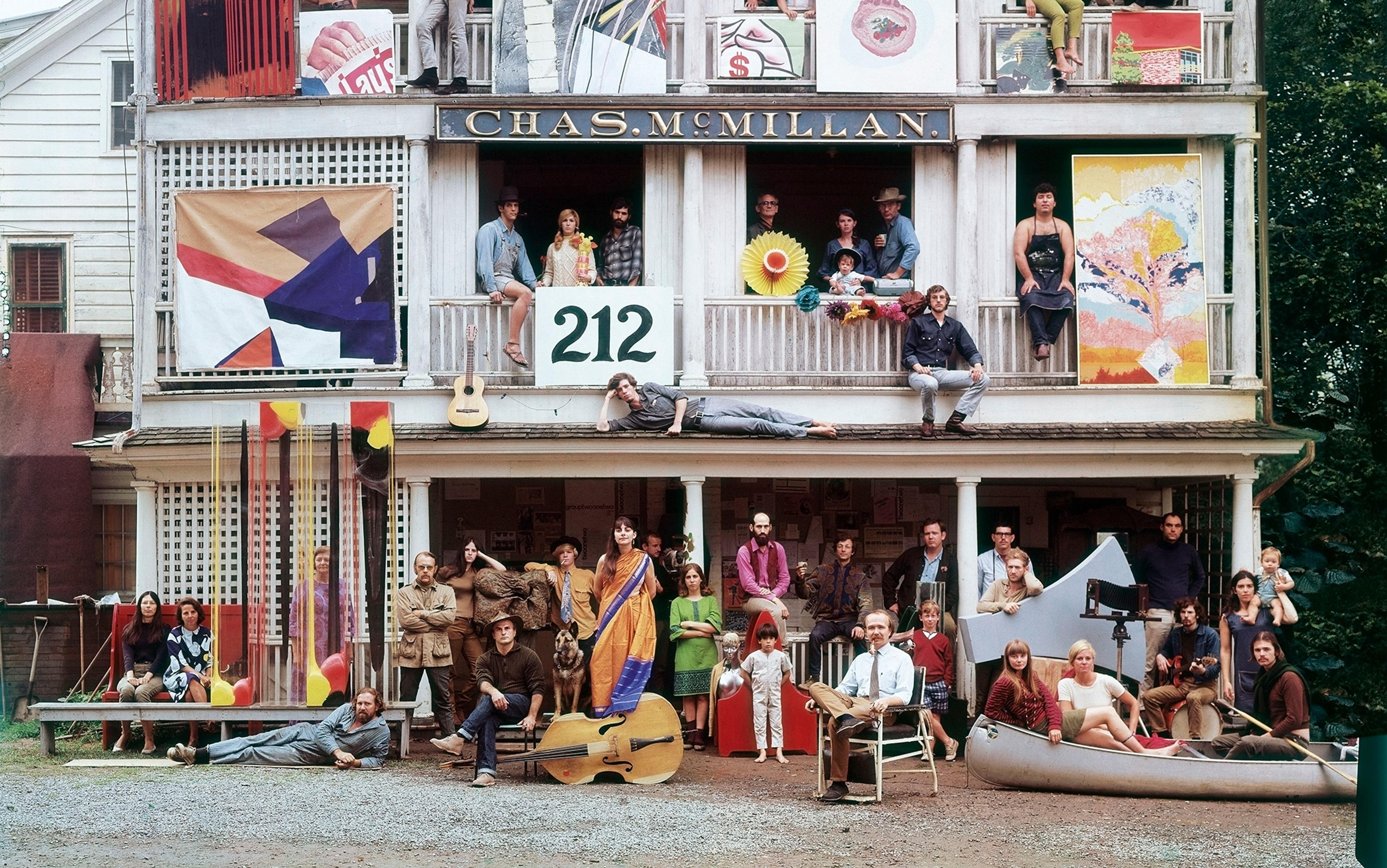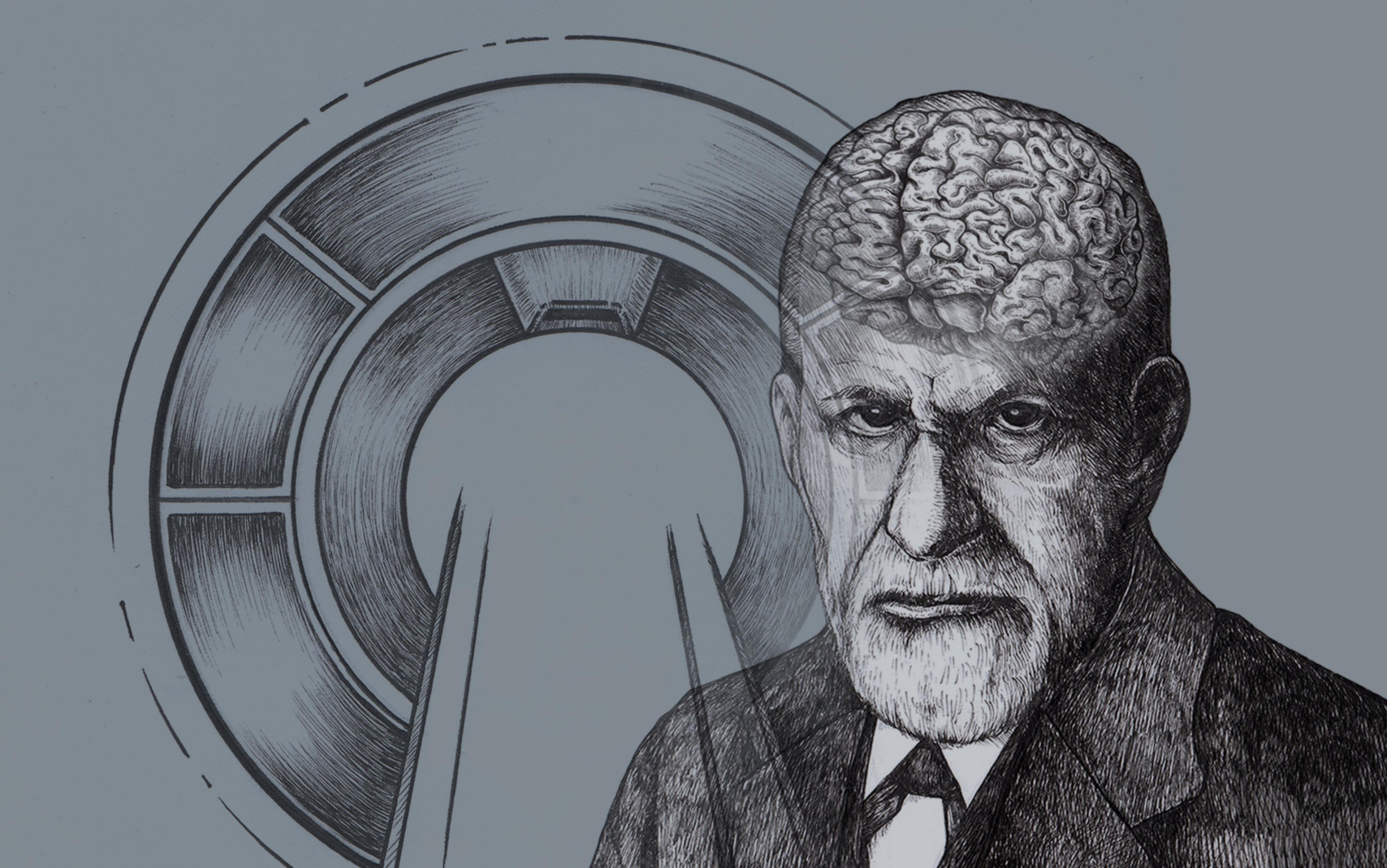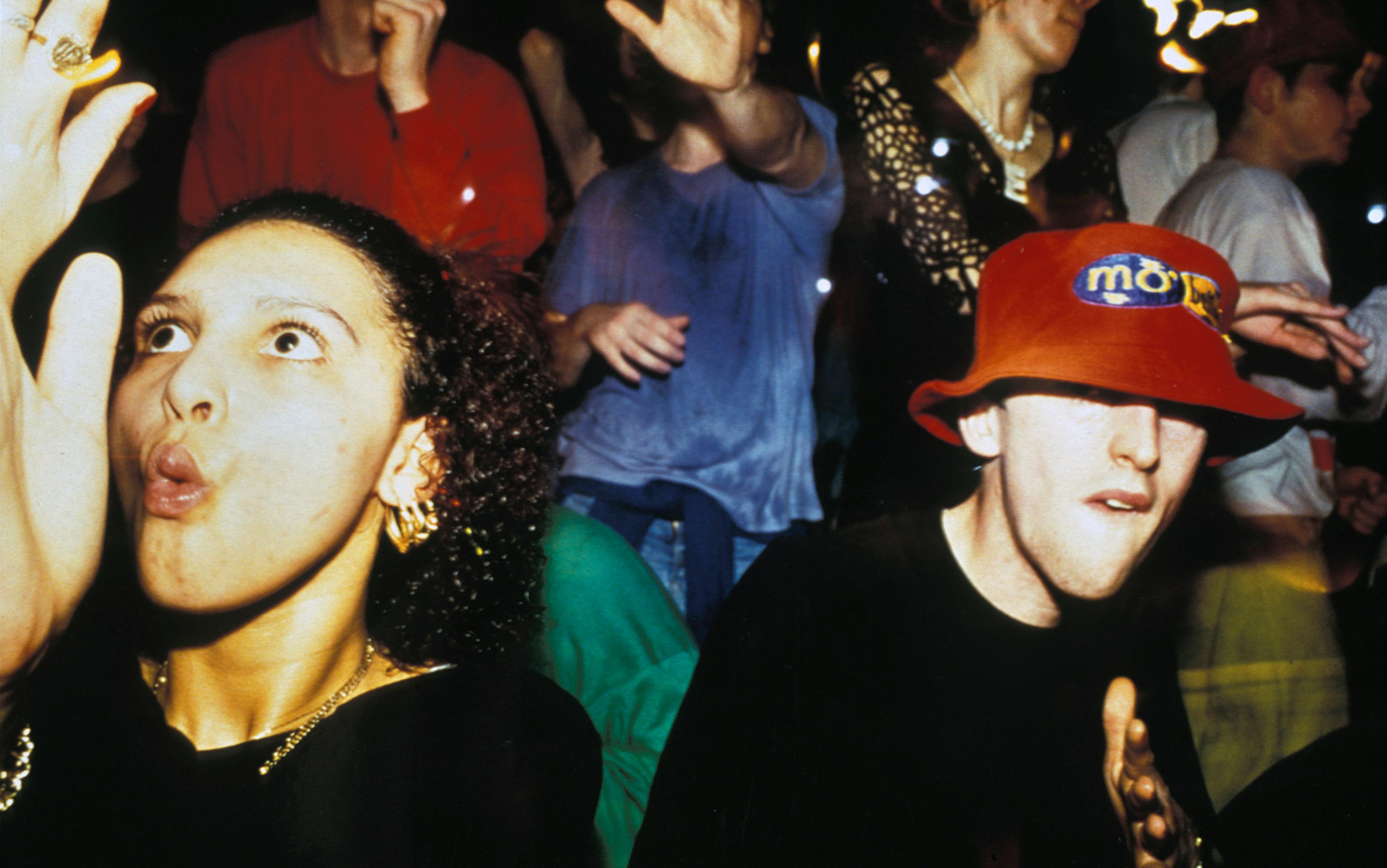In November 1967, Robin Farquharson ‘dropped out’. After losing his job as a computer programmer along with the flat he’d been renting, he decided to forgo the dwindling funds in his bank account and live on London’s streets. In his short memoir Drop Out! (1968), Farquharson recounted his homeless wanderings and loose associations with London’s underground scene, moving from all-night cafés to ‘psychedelic’ nightclubs; he described being robbed and beaten in the street, and his first experience of LSD. At 37, Farquharson felt too old to be a hippy, nonetheless he saw his disaffiliation within the context of a wider movement towards social and personal liberation, inspired by Timothy Leary’s injunction to ‘turn on, tune in, drop out’: words he interpreted as a call to ‘rid yourself of responsibility, quit the rat-race. Don’t obey society’s paralysing conventions … Step out of the trap.’
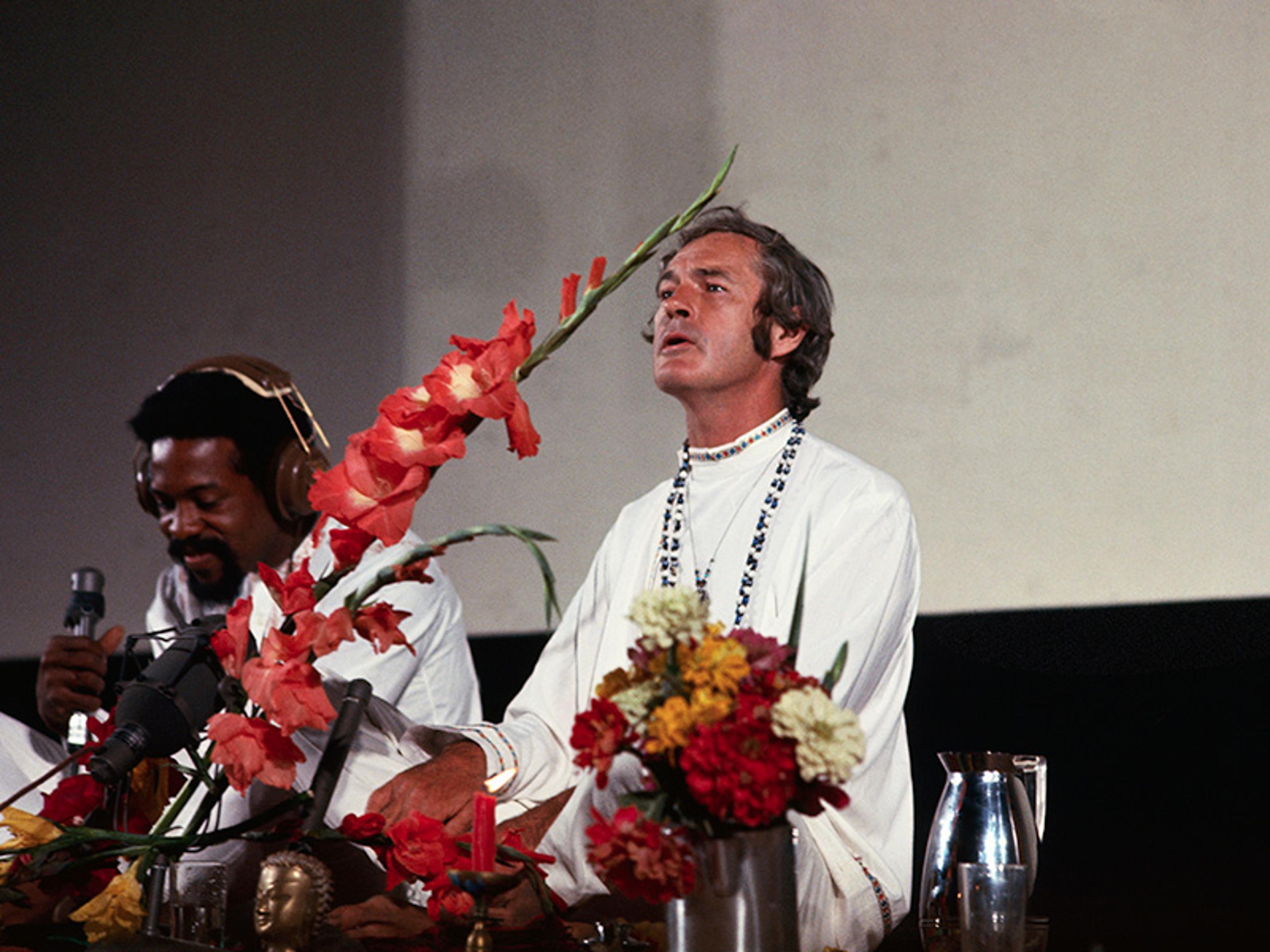
Timothy Leary addresses the National Student Association Congress, 17 August 1967. Photo by Bettmann/Getty
The year 1967 marked a high point in this history. That was when San Francisco played host to the ‘Summer of Love’, when thousands of young hippies descended on its Haight-Ashbury district, drawn to its carnivalesque atmosphere, psychedelic hedonism and alternative living. According to Leary, places like the Haight offered a redemptive starting point for ‘everyone that’s caught inside a television set of props, and made of actors’. In London, the major countercultural event that summer was the Congress on the Dialectics of Liberation at the Roundhouse in Camden. For two weeks in July 1967, thinkers and activists including R D Laing, Gregory Bateson, Stokely Carmichael and Herbert Marcuse (women speakers were notably absent) gathered to debate new ways forward. Though a more overtly political event than the Summer of Love, the idea that psychological liberation was a prerequisite of political change was a central theme. ‘[W]e are taught, and coerced, to see things through a filter of politically arrived at and socially sanctioned lies,’ said one announcement prior to the event. ‘The entire world as we “know” it must be demystified.’
Though differing in style and scope, both events emphasised dropping out as hinged on a particular set of anxieties about modernity and its threat to the liberal mind. In The Making of a Counter Culture (1969), the academic Theodore Roszak had celebrated this crucial point of resistance against what he called ‘the technocracy’, a regime of governance that sought to rationalise and control all aspects of society, including its citizens. His concerns were not idiosyncratic; Roszak’s worldview drew on other critics of technocratic modernity, including Leary, Marcuse, C Wright Mills, Paul Goodman, Norman O Brown, Alan Watts and Jacques Ellul. All manifested what Roszak regarded as a healthy suspicion of the power structures of Western democracy that, according to Marcuse, had become totalitarian in everything but name. The dropouts embodied in the writings and adventures of Farquharson, Jack Kerouac, and Ken Kesey offered a potential antidote. To drop out in this sense was to strive for internal freedom through processes of ‘deconditioning’ or ‘unbrainwashing’ and imagine a type of self that could not be controlled or contained.
Cultural historians argue that the postwar period was marked by an acute set of anxieties – what Timothy Melley in Empire of Conspiracy (2000) labels ‘agency panic’ – about the potential for large institutions, states and technologies to control the arena of the personal self. Such concerns, already heightened by the rise of totalitarianism in Nazi Germany and the Soviet Union, were boosted by the appearance of new forms of mass media and mass culture, the growth of the covert security state, and rampant globalisation. But fears of mind manipulation were also driven by the growing influence of the psychological sciences and the belief that the next major frontier in science – the mind and brain – would soon be unlocked.
Addressing the American Psychological Association in 1955, the physicist J Robert Oppenheimer warned his audience that every acquisition of psychological knowledge opens up the ‘most terrifying prospects of controlling what people do and how they think and how they behave and how they feel.’ His comments came in the wake of the Korean War, when reports of prisoners of war (POWs) collaborating with the communist enemy raised widespread alarm about the role of psychology in warfare. In one case, several captured US airmen publicly confessed to committing crimes of bacteriological warfare in North Korea. Some commentators claimed they had been the victims of powerful techniques of psychological manipulation, known as ‘brainwashing’, suspicions that appeared to be confirmed by further scandals in Chinese prison camps. After the war, 21 Americans even chose to live in communist China rather than be repatriated.
Allen Dulles, director of the Central Intelligence Agency (CIA), declared that the communist enemy was waging a new form of ‘brain warfare’, seeking to ‘condition the mind so that it no longer reacts on a free will or rational basis but responds to impulses implanted from outside.’ A panel of military psychiatrists charged with investigating the conduct of Korean War POWs later dismissed the more sensational claims about brainwashing, calling for ‘more sober analyses’ of POW behaviour; nonetheless, throughout the 1950s brainwashing had become a point of fascination for the military and intelligence community, who helped fund both covert and overt research into methods of psychological indoctrination.
It also became an important cultural motif, featuring in numerous literary and cinematic productions, including John Frankenheimer’s film The Manchurian Candidate (1962). Frankenheimer’s semiparodic take on the subject showed how loyal POWs serving in North Korea might be turned into political assassins. But it also captured other concerns about psychological manipulation from the 1950s: a fearmongering McCarthyite senator, ever-present television media, political propaganda, and a domineering mother, played by Angela Lansbury. The latter tapped into ‘momism’, a misogynist panic arguing that young American boys were emasculated victims of psychological pressures placed on them by their mothers. Themes of brainwashing also surfaced in various writings about the role of psychologists in corporate America. In his bestselling exposé of ‘depth’ psychology in the advertising industry, The Hidden Persuaders (1957), Vance Packard described the large-scale efforts ‘being made, often with impressive success, to channel our unthinking habits, our purchasing decisions, and our thought processes by the use of insights gleaned from psychiatry and the social sciences’.
Dropping out was a way of safeguarding this inviolable private life
Suspicions about brainwashing were also a hallmark of countercultural writings. ‘The stupendous machinery surrounding us conditions our “thoughts, feelings and apparent sensory impressions,” and reinforces our mental slavery,’ wrote Allen Ginsberg in 1967. Faced with such an assault, he suggested the best minds should drop out and jolt ‘the soft machine of the brain out of its conditioned hypnosis’. In doing so, they turned to the work of artists and writers, but also psychologists such as Leary and ‘anti-psychiatrists’ such as Laing, whose writings stood as explicit counterpoints to the aims and objectives of mainstream psychology and an antidote to a vision of selfhood that is predetermined or susceptible to psychological manipulation.
What does a mind free from such control look like? This question preoccupied writers and thinkers across the political spectrum, not least Hannah Arendt. In The Origins of Totalitarianism (1951), she described the emergence of a new form of power in the 20th century, employing mass media, bureaucracy and psychological techniques to control every aspect of social and economic behaviour. But totalitarianism’s architecture of control could be effective only if its subjects operated solely in mechanistic terms, as a series of conditioned reflexes, denying any role to cognition, interiority and an unconscious mind. For Arendt, this was a false vision: human beings possess natural capacities for the free exercise of reason that must be protected by safeguarding what the ancients called the private sphere, retaining space and time for solitary contemplation. Here, the mind converses with itself (an idea borrowed from the Stoics) in an uninhibited dialogue of thought. This solitary inner life was for Arendt the source of political reason and ethics, but also an indeterminate space that could not be controlled from without.
Dropping out was a way of safeguarding this inviolable private life; a theme that was frequently explored in totalitarian fiction. In George Orwell’s Nineteen Eighty-Four (1949), a couple seeking refuge from the surveillance state live among the ‘proles’ on the fringes of society. Orwell was already known for his sympathetic portrayal of poverty and homelessness in Down and Out in Paris and London (1933). But against the spectre of totalitarianism, the poorest classes are depicted in Nineteen Eighty-Four as the last refuges of unviolated interiority, known in Oceania’s newspeak as ‘Ownlife’.
For Orwell, a free interiority is tied closely to truth and reason – the ‘freedom to say that two plus two make four’ – but it was another totalitarian classic from the era, Arthur Koestler’s Darkness at Noon (1940), that would celebrate disconnect as a route to an expanded and indeterminate inner life. Held captive in a solitary cell in Soviet Russia, Koestler’s protagonist Rubashov, a former political commissar, discovers a hitherto suppressed internal realm, a complex region of spiritual and emotional life that gives rise to an ‘oceanic sense’. Rubashov experiences his ‘personality dissolved as a grain of salt in the sea; but at the same time the infinite sea seemed to be contained in the grain of salt’. Koestler drew on his time as a prisoner of Franco during the Spanish Civil War and, in various memoirs, claimed that it was his experience of the oceanic that prompted him to quit the Communist Party in 1938. As he would argue in Darkness at Noon, the knowledge of the self as infinite and indeterminate disrupts both the logic and the project of totalitarian control, and illustrates the individual as essentially free.
In 1961, Leary invited Koestler to Harvard University to experience the hallucinogenic effects of psilocybin (popularly known as magic mushrooms). Koestler was one of a long list of intellectuals, artists and writers, including Kerouac, Ginsberg and Willem de Kooning, who Leary hoped would respond enthusiastically to the drug. ‘Remember your enlightenments in the Franco Prison?’ Leary wrote to Koestler. ‘Very similar to what we are producing.’ Koestler was unenthusiastic. Insofar as his psilocybin trip resembled any form of inner enlightenment, he compared it to seeing the view from a summit without having climbed the mountain. Leary was unperturbed. At Harvard, he was steadily building a platform to proclaim the psychedelic experience as a tool of psychic liberation, demonstrating the limitless possibilities of mind in a world that increasingly tried to constrain it.
Prior to joining Harvard, Leary had made a name for himself as an expert in personality testing and theory, combining numerous metrics to develop a model of personality based on people’s situational behavioural strategies. Personality testing was booming in academia as well as in industry, with tests such as the Myers-Briggs, using introspective questionnaires to determine different personality ‘types’, being widely adopted in recruitment and management. But by the end of the 1950s, critics of the personality test grew more vocal, claiming it was a tool for the technocratic age, an unacceptable invasion of privacy and a means of policing nonconformity. William Whyte’s The Organization Man (1956), about the standardisation of the American workplace and its worker, implored readers to cheat on personality tests. An organisation could ask for labour in exchange for the worker’s salary, wrote Whyte, ‘but it should not ask for his psyche as well.’
During a mid-life crisis and facing wavering faith in his research, Leary’s first psilocybin trip on a visit to Mexico in 1960 was a revelation, offering an experience of selfhood that conventional personality diagnostics seemed unable to account for. Returning to Harvard, he set about reinventing his research under the auspices of the Harvard Psilocybin Project. The project’s board included Aldous Huxley, whom Leary had contacted after reading The Doors of Perception (1954), perhaps the most important postwar text on the psychedelic experience. Here Huxley proposed a theory, developed with the psychiatrist Humphry Osmond, that drugs such as mescaline remove vestigial filters on the brain, widening perception and allowing users to transcend the limits of everyday consciousness. Huxley was best known for pointing to the perils of behavioural control in a technoscientific future in his novel Brave New World (1932). Yet, during the 1950s, he also went through his own conversion, as Nicolas Langlitz puts it in Neuropsychedelia (2012), ‘from cynical British intellectual to committed Californian mystic’. For Huxley and Osmond, ‘psychedelic’ drugs such as mescaline, psilocybin and LSD offered potential liberation from a brave new world of mind-manipulating technologies. As Osmond wrote to Huxley in 1957: ‘expand the psyche or become slaves of the machine’.
The psychedelic experience was, for Leary, a fast-track to ‘jailbreaking the mind’
In ‘How to Change Behaviour’ (1962), Leary set out a vision for psilocybin therapy as a way of countering the rigid modalities of behaviour, or culturally determined ‘games’ that societies imposed. According to Leary and his colleagues, psilocybin allowed its users to experience consciousness as a multitudinous set of possibilities. He later wrote:
The first step is the realisation that there is more: that man’s brain, his 13-billion-celled computer, is capable of limitless new dimensions of awareness and knowledge. In short, that man does not use his head.
In 1962, Leary and several colleagues would establish the International Federation for Internal Freedom, which claimed in its manifesto:
We are aware that cultural structures (however libertarian their purpose) inevitably produce roles, rules, rituals, values, words and strategies which end in external control of internal freedom. This is the danger we seek to avoid.
Leary had entered Harvard trying to understand, map and diagnose the roles, rituals and values that shape interpersonal behaviour; he left arguing for the need to embrace a more complicated vision of selfhood that could not be contained in a series of personality types. The psychedelic experience was a fast-track to ‘jailbreaking the mind’ in a world where, he said, ‘objective science, automation, machine-like conformity, and political thought control’ threaten the survival of the individual.
In the 1960s, the beat writer Alexander Trocchi invited Leary to join Project Sigma, an underground network of activists, dedicated to cultural revolution. Trocchi saw Leary and his ‘group of mad doctors’ as the US counterpart to another ‘group of mad doctors’ he knew in London, ‘centred around a man called Laing’. It was by no means the first or last time that the Scottish psychiatrist would be compared with Leary. Both men emerged from establishment professions in academia and medicine to achieve the kind of countercultural celebrity usually reserved for writers, musicians and actors. Both acquired cultish followings and built careers on a call to liberate the mind in a world where social conditioning and manipulation were said to be pervasive. While Leary’s ‘jail break’ was tied closely to the psychedelic experience, Laing’s politics of the mind involved rewriting the medical rulebook to embrace the kinds of experiences pathologised by conventional psychiatry. Laing’s colleague David Cooper named this movement ‘anti-psychiatry’ to reflect their commitment to radical innovation in the field of mental health.
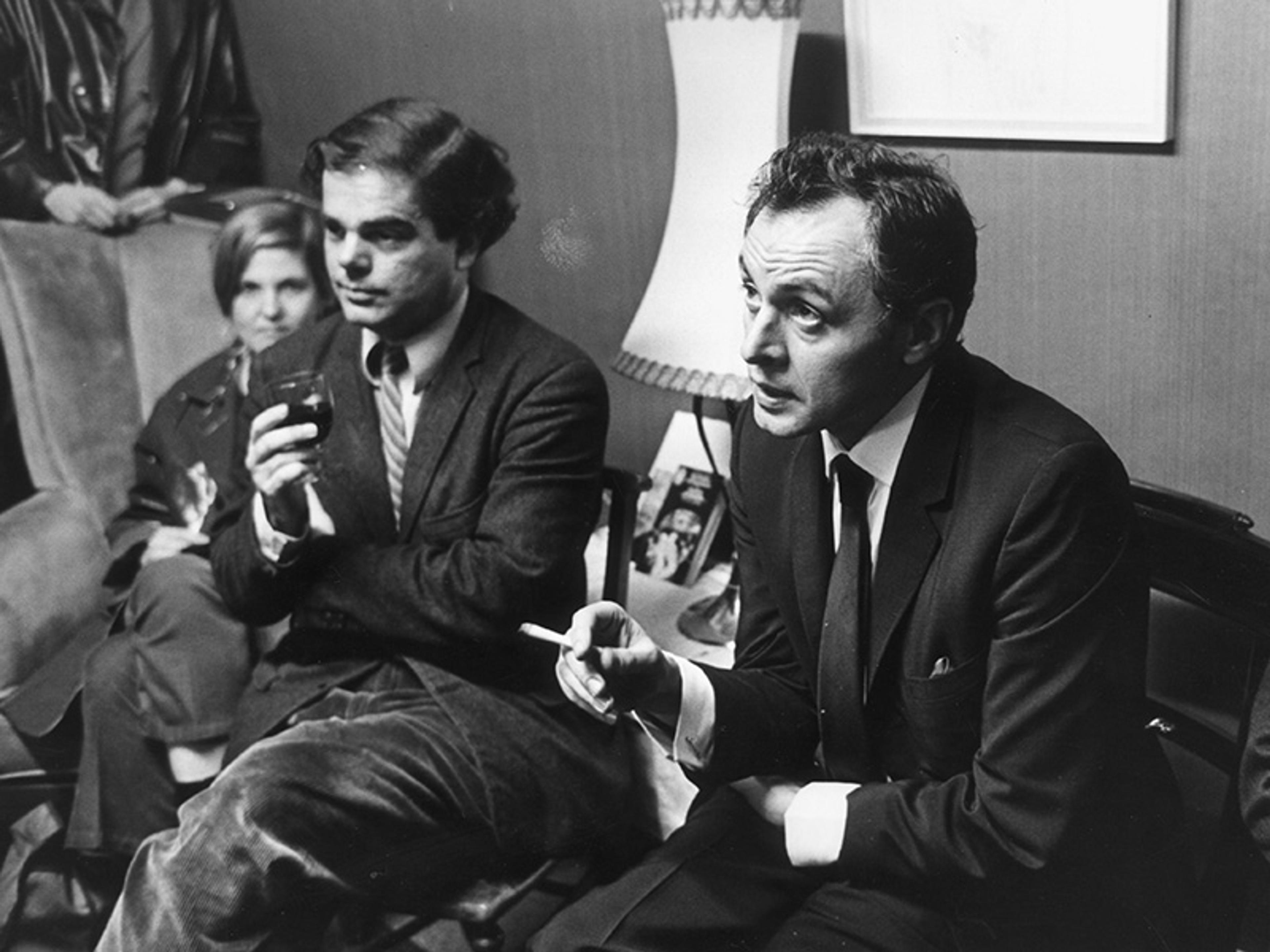
R D Laing (right) attends a discussion on the legalisation of marijuana in London in 1967. Photo by Stan Meagher/Express/Getty
Laing entered psychiatry in the 1950s during a period of innovation and optimism about the potential for treating patients suffering chronic mental illness. Some of these innovations were psychosocial, involving experiments with group and community therapy – techniques that would influence much of the work later done under the banner of ‘anti-psychiatry’. But the 1950s also saw widespread uptake of ‘new’ methods of physical treatment first developed in the interwar years, such as insulin coma therapy, drug treatments, lobotomy and ECT. Enthusiasts claimed these techniques were bringing about a revolution in psychiatry that would see all mental pathologies treated like any other condition – with medical intervention at outpatient-style hospital wards. Their critics argued that these physical treatments were damaging and coercive, sedating and pacifying patients instead of healing them. One of the most vocal proponents of physical therapies, the psychiatrist William Sargant, had guilelessly compared his own techniques to ‘brain-washing’. In his 1985 autobiography, Laing paints a grim picture of his earliest experiences as a psychiatrist, writing:
I was beginning to suspect that insulin and electric shocks, not to mention lobotomy and the whole environment of a psychiatric unit, were ways of destroying people and driving people crazy if they were not so before, and crazier if they were.
Laing made his first major intervention into psychiatric discourse with The Divided Self (1960), a book that promised to make ‘madness, and the process of going mad, comprehensible’. Drawing on insights from existential philosophy and contemporary psychoanalysis, he portrayed the withdrawn and isolated states of his schizoid patients as a response to what they perceived as a threatening and bewildering interpersonal environment. A ‘schizophrenic may say that he is made of glass’, Laing wrote, ‘of such transparency and fragility that a look directed at him splinters him to bits and penetrates straight through him’.
On Laing’s model, those individuals that society labelled ‘normal’ were most alienated from inner authenticity
The first edition of The Divided Self received a polite reception, with reviewers commending Laing’s demand for a more humane approach to psychiatry and his vivid portrayal of schizophrenic lives. But in the far more widely read paperback edition of 1965, Laing included a short foreword gesturing to a more radical agenda:
Psychiatry could be, and some psychiatrists are, on the side of transcendence, of genuine freedom, and of true human growth. But psychiatry can so easily be a technique of brainwashing, of inducing behaviour that is adjusted.
This ‘normal’ ‘adjusted’ state, he suggests ‘is too often the abdication of ecstasy, the betrayal of our true potentialities … a false self to adapt to false realities.’ He goes on to evoke Marcuse’s countercultural classic One-Dimensional Man (1964), writing that:
Among one-dimensional men, it is not surprising that someone with an insistent experience of other dimensions, that he cannot entirely deny or forget, will run the risk either of being destroyed by the others, or of betraying what he knows.
In this short preface, Laing resituated The Divided Self within the more radical ideas of British anti-psychiatry and its international influences, including the work of Erving Goffman, Michel Foucault and Thomas Szasz. As the psychologist Daniel Burston points out in The Wing of Madness (1996), Laing gives little reason, in the first edition of The Divided Self, for readers to think that normal adjustment or ‘ontological security’ is undesirable, especially when compared with the ‘torment and loneliness’ of the schizoid position. But, soon after, Laing shifted his position, referring to normality more pejoratively as an adjustment to a system of capitalist excess and social injustice. On this model, those individuals that society labelled ‘normal’ were most alienated from inner authenticity. Connecting with the minds and lives of schizophrenic patients, the anti-psychiatrists suggested, offered a potential pathway to liberation. Schizophrenics, Laing wrote in The Politics of Experience (1967), are brilliantly ‘adept at making themselves unremittingly incomprehensible’, and it was precisely this unintelligibility that made the schizophrenic mind a model of psychic resistance in an over-controlling world.
In 1965, Laing and several colleagues established a therapeutic community at Kingsley Hall in East London. The community was anti-hierarchical, without formal roles, and with every member of the community paying rent – although its chief architects undoubtedly held considerable sway over the running of things. During their five-year tenure, Kingsley Hall received numerous guests, seeking therapy or wanting to experience its alternative lifestyle and politics. As the therapist Joseph Berke wrote in 1971:
They came because friends lived there or because they liked community life, or heard that Kingsley Hall was a ‘groovy scene’, or to demonstrate their wares at the poetry readings, film shows, music and dance recitals, and art exhibitions which took place in the big hall downstairs.
If Berke’s account is anything to go by, those visitors were certainly treated to a spectacle – long drawn-out dinners, where one might be seated next to Sean Connery or Francis Huxley, listening to Laing holding court on philosophy and psychology.
The psychopolitical narrative linked the schizophrenic experience with the psychedelic
Kingsley Hall also played host to a serious therapeutic project, inspired in part by Bateson’s description of psychosis as ‘a voyage of discovery’ from which the psychotic returns ‘with insights different from those of the inhabitants who never embarked on such a voyage.’ Instead of the mental hospital, Laing wrote:
[W]e need a place where people who have travelled further and, consequently, may be more lost than psychiatrists and other sane people, can find their way further into inner space and time, and back again … Psychiatrically, this would appear as ex-patients helping future patients to go mad.
The story of one Kingsley Hall resident, Mary Barnes, appeared to vindicate this approach. Her therapeutic journey involved ‘going down’ into a state of infantile regression, where, with the help of her therapist – the aforementioned Berke – and the wider community, she occupied an artificial womb, fed from a bottle, and painted with her faeces. Her regression was described as a necessary precursor to her reintegration, after which she took on a role as caregiver within the community and went on to be a successful artist.
Though her case was widely celebrated by Kingsley Hall’s advocates, critics regarded it as an exception. Ultimately, the Kingsley Hall project was short lived. Many residents found life there difficult, and few, including Laing, stayed for extended periods. Though the community had been set up with the ambition of removing chemical and physical restraint, there were incidents of violence and physical coercion. One of the more disturbing moments in their coauthored biography Mary Barnes: Two Accounts of a Journey Through Madness (1971) is Berke’s description of punching Barnes and making her nose bleed during a moment of frustration. Laing’s son Adrian claimed it was almost impossible to stay sane at Kingsley Hall and that living there sent his father into a state of ‘drunken, wild madness’. In The British Anti-Psychiatrists (2017), the historian Oisín Wall writes that many residents felt under pressure to act mad, or in Laing’s words have a ‘dishonest flip-out’.
Under looming financial pressure, and infighting among its founding members, the community disbanded in 1970 and the building was left to disrepair. The key figures behind Kingsley Hall moved in different directions, some returning to more conventional psychiatry, while others pivoted towards the counterculture and political activism. Though many legacies of the anti-psychiatric movement live on, the psychopolitical narrative that linked the schizophrenic experience with the psychedelic and situated both within the post-war struggle for the mind was largely forgotten.
By the end of the decade, the politics that had formed the far-out element of anti-psychiatry and the psychedelic movement were shifting. The apparent apathy of dropping out and doing one’s thing was seen by factions of the New Left as a hedonistic distraction from targeted activism, while Kingsley Hall represented the folly of trying to contain individual liberation, political revolution and mental health reform under one roof and one endeavour. The utopian ideals that underpinned the Summer of Love in San Francisco exposed a similar naivety. By the autumn of 1967, the Haight had become a haven for young runaways and addicts, and sexual exploitation was rife. It seemed a stark reminder of the warnings Erich Fromm posed in Escape from Freedom (1941), when he argued that liberation expressed only in negative terms was futile without a positive social and psychic structure. In Bomb Culture (1968), the activist Jeff Nuttall wrote:
[T]he West Coast hippies were utterly parasitic, not other, not alternative, not truly a community, in that their whole self-maintenance relied on the excess material in the overmaterialistic culture they purported to despise.
Both Leary and Laing built their public profiles and their departures from medical and academic orthodoxy on a call to liberate the mind. In doing so, they drew on a series of postwar anxieties about mind control and the existential threat that Cold War psychology and late modernity was said to pose to the liberal self. Dropping out in its simplest form meant preserving interiority through disaffiliation from the wider culture, but the psychedelic vision of the dropout went further, arguing that, since threats to the mind were so pervasive and all-consuming, freedom required pushing the boundaries of consciousness to embrace alterity and preserve the mind’s enigmatic status in the century of the human sciences.
The fear is that the digital age has not liberated us but exposed us
By the end of the 1960s, the postwar fascination with mind control and psychic liberation was waning. Despite great advances in psychological and psychiatric research, the mind and brain continued to be an enigma, and many postwar fears about brainwashing were looked back on as sensational, even paranoid. On the other hand, as the intellectual landscape of philosophy and sociology drifted into the postmodern, the idea that agency and culture was ‘conditioned’, ‘situated’ or ‘constructed’ largely came to be taken for granted.
And yet we appear to have arrived full circle. Today, many of the debates about behavioural control in the age of big data echo Cold War-era anxieties about brainwashing, reprising the Marcusian nightmare of insidious manipulation and repression in the ‘technological society’. In Byung-Chul Han’s book Psychopolitics (2017), the philosopher warns of the sophisticated use of targeted online content, enabling ‘influence to take place on a pre-reflexive level’. On our current trajectory, writes Han, ‘freedom will prove to have been merely an interlude.’ The fear is that the digital age has not liberated us but exposed us, by offering up our private lives to machine-learning algorithms able to process the masses of personal and behavioural data often unwittingly disclosed daily.
In a world of influencers and digital entrepreneurs, it’s not easy to imagine the resurgence of a culture engendered through disconnect and disaffiliation, but concerns over the threat of online targeting, polarisation and big data have inspired recent polemics about the need to rediscover solitude and disconnect. In Psychopolitics, Han muses on the philosophical figure of the ‘idiot’ who resists neoliberalism’s order of ‘total communication and total surveillance’ by veiling themselves in noncommunicative silence: ‘By nature, the idiot is unallied, un-networked, and uninformed.’ Han often portrays himself in the guise of this modern-day heretic, surrounding himself with analogue objects and nurturing the garden that he says connects him to ‘earth’s otherness’.
Jenny Odell’s book How to Do Nothing (2019) provides more of a practical guide for resisting the lure of the attention economy by reconnecting with our lived environment and exercising alternative practices of attention and volition. Alternatively, hobbyist communities known as self-hosters argue that resisting surveillance capitalism does not necessarily require disconnecting but, instead, reclaiming the architecture of the internet and running services on hardware owned by individuals and collectives, as opposed to the monopolies of big tech. In such examples, the legacies of the 1960s dropout and its politics of disconnect are alive and well, romanticising lives lived against the grain of a digitised existence. But they also push back against the psychedelic, indeterminate vision of the dropout I’ve explored. Perhaps because machine learning puts into question the nature of human spontaneity and the limits of behavioural unpredictability, its critics are inspired to reprise debates about privacy and those parts of the self that should remain hidden.
To read more about altered states and the history of psychiatry, visit Psyche, a digital magazine from Aeon that illuminates the human condition through psychology, philosophy and the arts.
